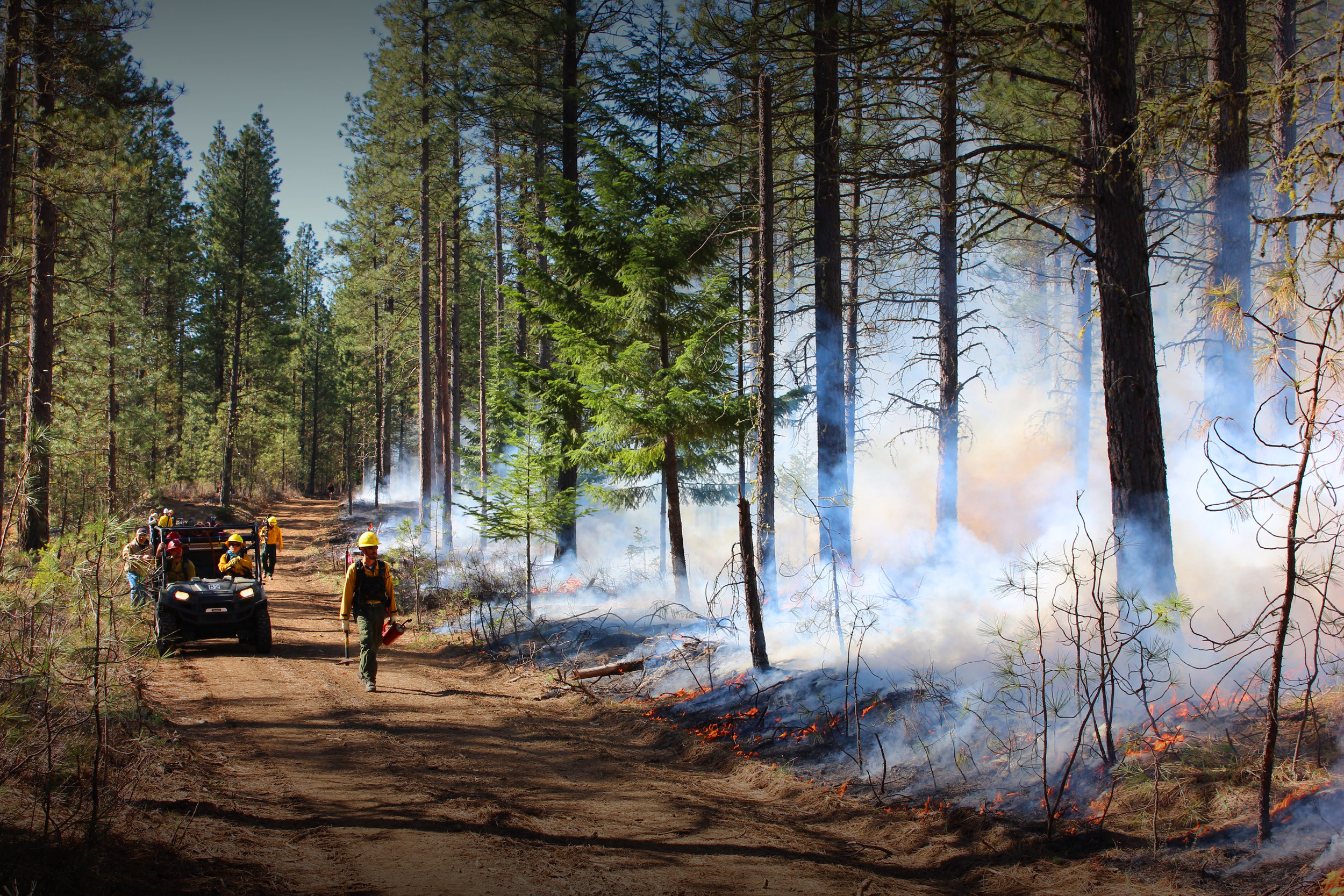Collaborating on a Community Forest
When you’re looking to build capacity in an industry fraught with liability and restriction, where do you start? If you’re Mt. Adams Resource Stewards, and managing a Community Forest, the answer is: ahead of the curve.
Mount Adams Resource Stewards (MARS) knows their local culture, and knows they’ve got something special going on. “When bans are lifted, and there are a few sunny days after a rain, it’s sort of like clockwork — everyone is outside burning,” says Jay McLaughlin, MARS Executive Director.
And it’s not just small landowners, either. Big players in the area, especially the Yakama Nation and Conboy Lake National Wildlife Refuge, have long-embraced controlled fire for its important role in resource management, habitat restoration, food security, and cultural practices. The last 10-15 years saw more concern for fire liability, but overall, local fire sentiment remains decidedly positive.
Even with broad-based community acceptance of controlled fire and the temporary smoke it creates, MARS knew they were in for a long regulatory and permitting process when they decided to burn 30 acres of fire-dependent ponderosa pine on the Pine Flats Tract of the Mt. Adams Community Forest. Thinning and fuels reduction had been completed the prior year, and it was now time for nitty-gritty permitting, budgeting, planning, expert burn management and comprehensive mop-up.
Beyond these critical logistics, MARS also wanted to make sure that the burn provided educational opportunities for their staff, and to the extent possible, utilized local, red-carded practitioners from a variety of fire backgrounds who were familiar with area topography. To top it all off, they wanted to secure a DNR cost-share to help defray expenses.
It was a tall order. So they brought in one of the most active, qualified controlled burners in Washington — the Center for Natural Lands Management. And, together, CNLM and MARS brought it home.
“Mason McKinley and the entire CNLM burn team really helped us get there,” says McLaughlin. “With so many years of prescribed burning as part of the Nature Conservancy, 90+ burns per year now, and active relationships with all the key regulatory folks, these guys are the best. We knew we were in good hands.”
Measuring Success
By all accounts, the Spring 2016 burn was a success — a cool, light burn specifically managed to produce a variety of observable fire effects and very little (if any!) overstory mortality. Mop-up was a bit more extensive than initially planned, but dedicated MARS volunteers pitched in to wrap it all up.
New MARS staff have been brought on to conduct robust post-burn observation, including:
- photo monitoring
- intensive vegetation plots
- rare plant analysis
- ongoing fuels management for the project area and surrounding acreage
And there are plans to replicate the success of the collaboration on 90 acres of the Community Forest in Spring 2017.
What's Next?
“We’re not huge landowners,” says McLaughlin. “We’re going to max out on our ability to burn without additional properties. But we’ve still got a ways to go on our current holdings, and landscape restoration isn’t our only agenda."
Adds McLaughlin, "What’s also really big for us is helping to build capacity. MARS wants to see local, trained, cross-pollinated fire response teams that know each other, their home turf, and how fire works in different settings.
There’s so much about prescribed burning that’s a unique skill set, and when we bring people together to burn on the Community Forest, we know that our forests, and our communities, will only get safer as a result."
LEARN MORE
Mt. Adams Resource Stewards
mtadamsstewards.org
Center for Natural Lands Management
cnlm.org / southsouthprairies.org
WA Department of Natural Resources
Forest Stewardship Program
Conboy Lake National Wildlife Refuge
About the Refuge
Yakama Nation
About the Yakama Nation










